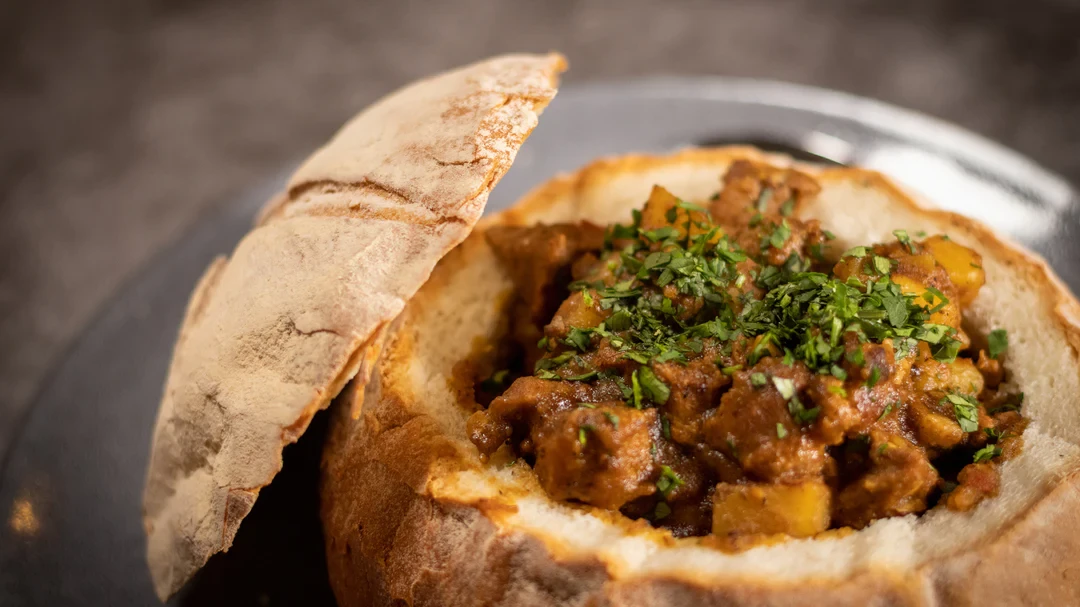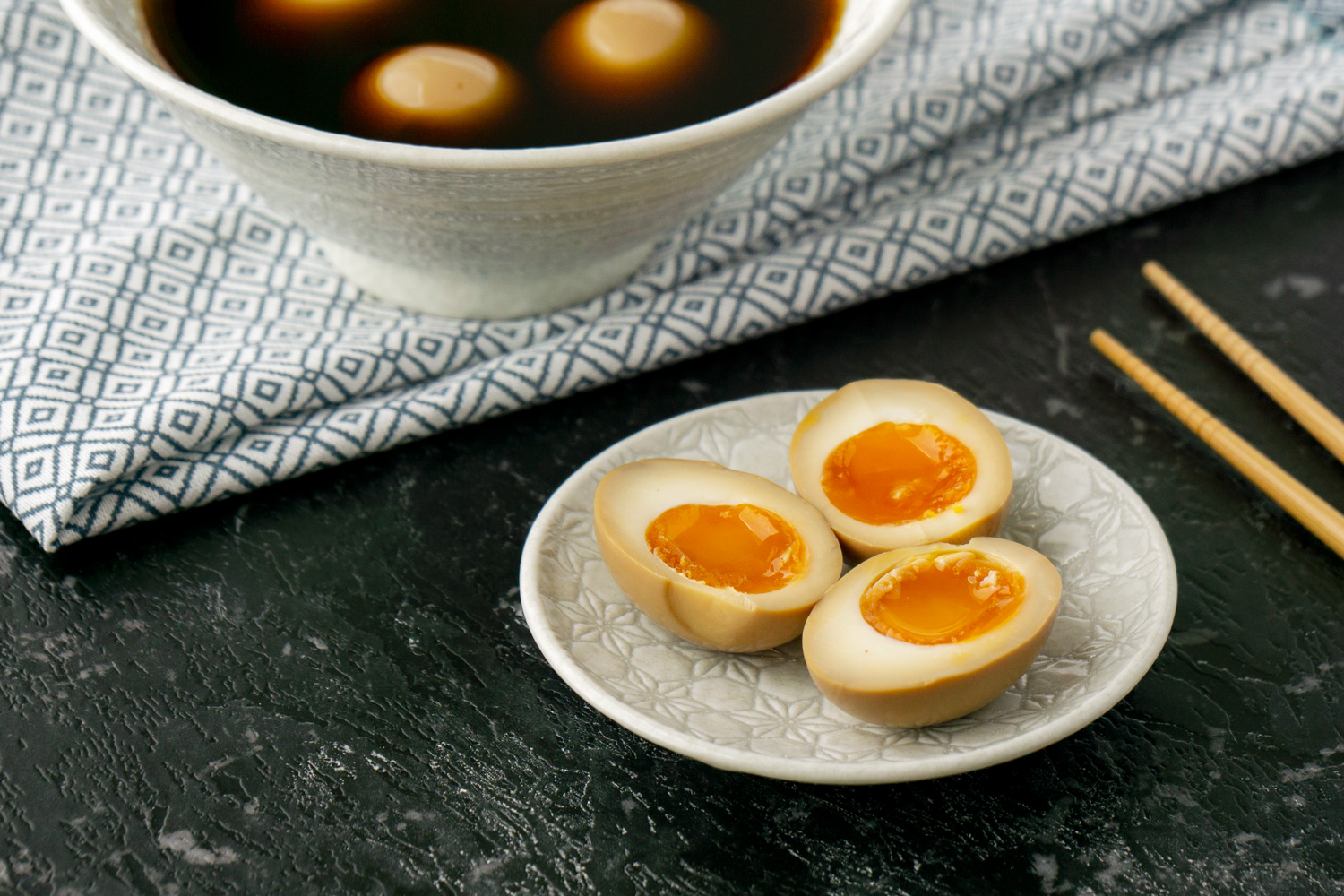Bunny chow, often simply referred to as “bunny,” is a unique and flavorful street food that originated in Durban, South Africa. This beloved dish consists of a hollowed-out loaf of bread filled with a spicy curry, typically made with meat, beans, or vegetables. Despite its quirky name, bunny chow has no relation to rabbits; the term “bunny” is believed to be a corruption of “bania,” referring to an Indian merchant caste. This article explores the history, preparation, variations, and cultural significance of bunny chow, highlighting why it remains a popular and cherished dish.

Historical Background
Bunny chow has its roots in the Indian community of Durban, which is home to the largest Indian population outside of India. Indian laborers were brought to South Africa in the 19th century to work on sugar plantations, and they brought with them their rich culinary traditions. Over time, these culinary practices fused with local ingredients and influences, giving birth to new dishes, including chow.
The exact origins of chow are somewhat contested, but it is widely believed to have been created as a convenient and portable meal for Indian laborers who needed a hearty lunch that could be easily transported and consumed in the fields. The hollowed-out bread served as a makeshift container for the curry, making it an innovative and practical solution.
Preparation of Bunny Chow
Bunny chow is relatively simple to prepare, but the results are delicious and satisfying. Here is a basic guide to making traditional bunny chow:
Ingredients
- Bread: A fresh, unsliced loaf of white bread is the traditional choice, but whole wheat bread can also be used.
- Curry: The curry can be made with a variety of ingredients, such as chicken, lamb, beef, beans, or vegetables. Common ingredients for the curry include onions, tomatoes, garlic, ginger, various spices (such as cumin, coriander, turmeric, and garam masala), and fresh herbs.
Steps
- Prepare the Curry:
- Heat oil in a pot and sauté chopped onions until golden brown.
- Add minced garlic and ginger, followed by the spices, and cook until fragrant.
- Add the meat or vegetables and cook until browned.
- Stir in chopped tomatoes and cook until the mixture thickens.
- Add water or broth, cover, and let it simmer until the meat is tender or the vegetables are cooked through.
- Season with salt and garnish with fresh cilantro.
- Prepare the Bread:
- Cut the loaf of bread into halves or quarters, depending on the desired serving size.
- Hollow out the inside of the bread, creating a cavity while leaving a thick crust on all sides to hold the curry.
- Assemble the Bunny Chow:
- Fill the hollowed-out bread with the hot curry.
- Serve with the removed bread pieces, which are used to scoop up the curry.
Variations of Bunny Chow

Bunny chow has evolved over the years, and various adaptations reflect the diverse culinary landscape of South Africa. Some popular variations include:
- Vegetarian Bunny Chow: Made with a hearty vegetable curry, often including potatoes, carrots, peas, and beans, this version is a favorite among vegetarians and vegans.
- Chicken Bunny Chow: One of the most popular versions, featuring a flavorful chicken curry. The chicken can be cooked on or off the bone, depending on preference.
- Lamb Bunny Chow: A rich and tender lamb curry fills the bread, offering a robust and satisfying meal.
- Bean Bunny Chow: Often made with sugar beans or butter beans, this version is a staple among the Indian community and is loved for its creamy texture and rich flavor.
- Seafood Bunny Chow: Less traditional but increasingly popular, this version features a curry made with prawns, fish, or other seafood, adding a coastal twist to the dish.
Cultural Significance
Bunny chow is more than just a meal; it is a symbol udintogel of South African culture and history. It represents the fusion of different culinary traditions and the ingenuity of a community adapting to new environments. The dish is deeply embedded in the social fabric of Durban, enjoyed by people from all walks of life and backgrounds.
A Symbol of Unity
Bunny chow has become a unifying dish in South Africa, transcending racial and cultural barriers. It is enjoyed by people of all ethnicities and is often seen as a culinary embodiment of the country’s diverse heritage. The communal nature of eating bunny chow, often shared and eaten with hands, fosters a sense of togetherness and camaraderie.
Street Food Culture
Bunny chow is a staple of Durban’s vibrant street food scene. It is commonly sold by street vendors and in small eateries known as “takeaways.” The accessibility and affordability of chow have made it a favorite among locals and tourists alike. It is often enjoyed as a quick lunch or a late-night snack, providing sustenance and comfort.
Culinary Tourism

Durban has become a destination for culinary tourists eager to experience authentic bunny chow. Food festivals and events often feature chow as a highlight, drawing visitors from around the world. The dish’s growing popularity has also led to its inclusion in cookbooks and food blogs, further spreading its fame.
Bunny Chow Around the World
While bunny chow remains most popular in South Africa, its appeal has spread to other parts of the world. South African expatriate communities in countries such as the United Kingdom, Australia, and the United States have introduced chow to new audiences. It is now featured in some international restaurants and food markets, allowing more people to experience this unique dish.
How to Enjoy Bunny Chow
For those new to bunny chow, here are some tips on how to fully enjoy this culinary delight:
- Embrace the Mess: Bunny chow is meant to be eaten with your hands. Tear off pieces of the bread to scoop up the curry, and don’t worry about making a mess—it’s part of the experience.
- Pair with Chutney: A side of chutney or pickles can add an extra layer of flavor to the dish. The tanginess and spice of chutney complement the rich curry beautifully.
- Enjoy with Friends: Bunny chow is a communal dish. Share it with friends and family to fully appreciate the social aspect of this meal.
Conclusion
Bunny chow is a testament to the ingenuity and adaptability of South Africa’s Indian community. From its humble origins as a practical meal for laborers to its status as a beloved street food, bunny chow has captured the hearts and taste buds of many. Its rich history, diverse variations, and cultural significance make it much more than just a dish—it is a symbol of unity, heritage, and culinary creativity. Whether you enjoy it on the streets of Durban or in a restaurant halfway across the world, chow is sure to provide a satisfying and memorable culinary experience.
Read More Article About “Spicy Pepes Tofu: A Culinary Delight and Fire Hazard Consideration“




